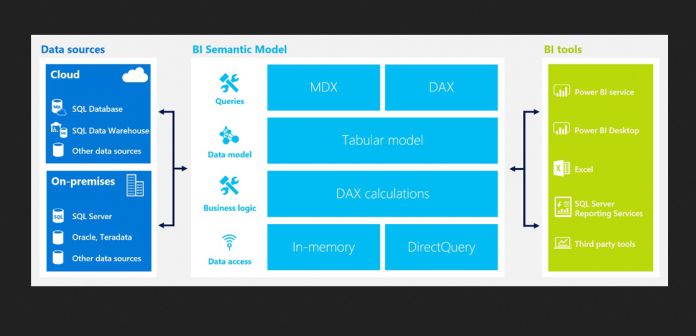The ability was announced by Josh Caplan, Azure senior program manager. He explains that business customers using Azure Analysis Services often lack expertise to manage data. Equally, organizations want more automated ways of gathering data sources and important and transforming raw data. More often, customers want to be able to explore data analysis and insights quickly. The new sample tool makes this possible. It is based off the Adventure Works Internet Sales database and is an evolution in self-service BI tools. Microsoft says the new ability shows modelling features from the Azure Analysis Services suite. Previously customers needed to create a model on the suite before they could use the service.
Azure Analysis Services
Microsoft created Azure Analysis Services as an evolution of the company’s SQL Server Analysis Services. The latter was a long-standing analytics engine used by Microsoft. Analysis services for Azure customers were made generally available in April. The company built the service to be able to keep up with demands of customers who need information ready instantly. Microsoft says the suite is helpful to all customers, not just IT professionals and data scientists. Azure Analysis Services is an enterprise grade OLAP engine and BI modelling platform. Microsoft presents the service as a managed PaaS. The platform is built from the same basis as SQL Server Analysis Services, giving developers and BI users tools to create BI Semantic Models. Analysis Services models can bring analytical and interactive tools to services such as Power BI and Excel. Some of the important features of the service are:
Developers can create a server in seconds, choosing from the Developer (D1) or Standard (S1, S2, S4) service tiers. Each tier comes with fixed capacity in terms of query processing units and model cache. The developer tier (D1) supports up to 3GB model cache and the largest tier (S4) supports up to 100GB. The Standard tiers offer dedicated capacity for predictable performance and are recommended for production workloads. The Developer tier is recommended for proof-of-concept, development, and test workloads. Administrators can pause and resume the server at any time. No charges are incurred when the server is paused. We also plan to offer administrators the ability to scale up and down a server between the Standard tiers (not available currently). Developers can use Azure Active Directory to manage user identity and role based security for their models. The service is currently available in the South-Central US and West Europe regions. More regions will be added during the preview.




